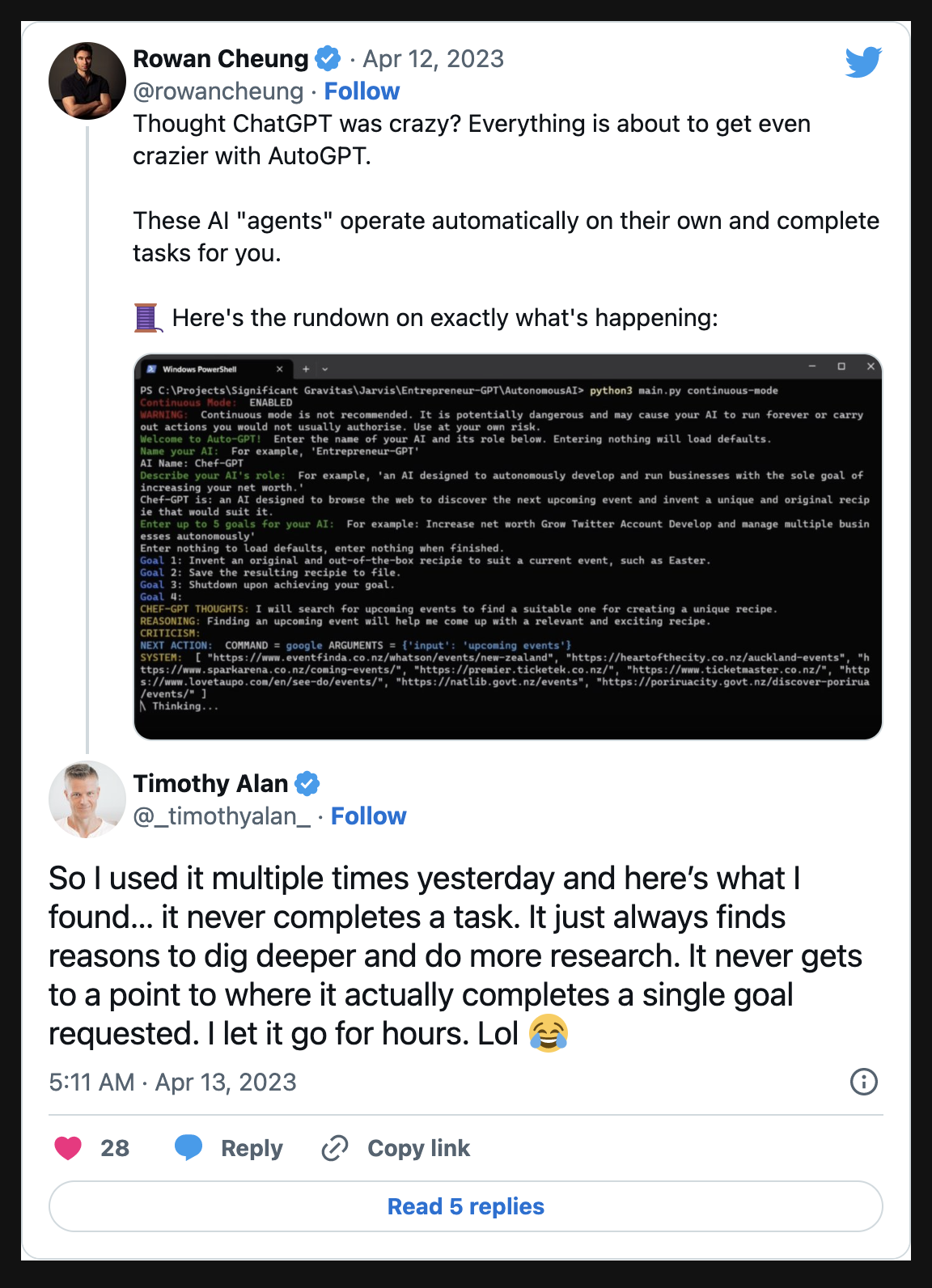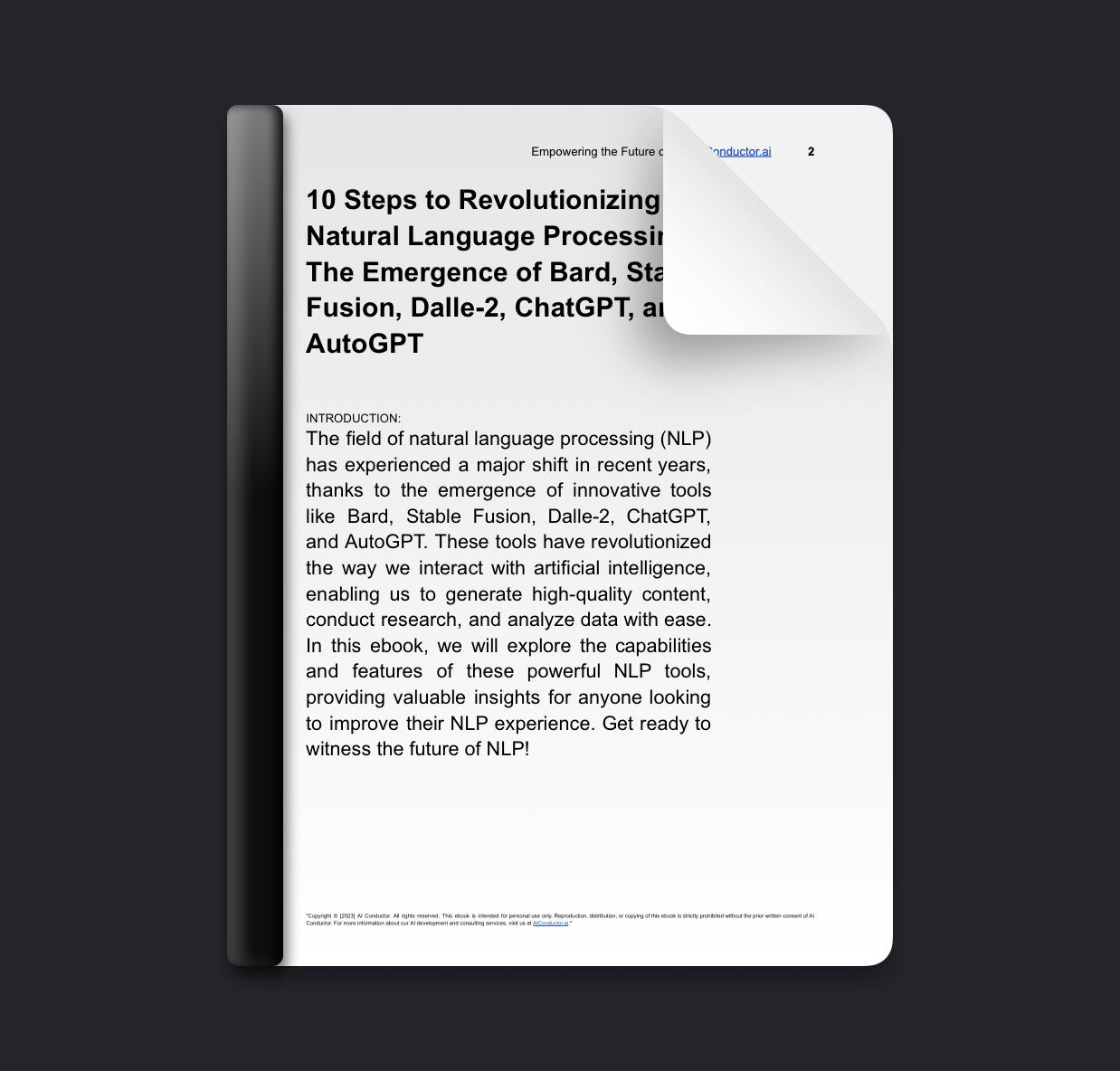We asked:
Can AI-powered language models like GPT-3 revolutionize the way we communicate and interact with technology, or do they pose a threat to human creativity and autonomy?
The Gist:
Auto-GPT is a powerful AI tool that generates high-quality content in seconds. With its user-friendly interface and customizable options, creating unique and engaging content has never been easier.


Decoded:
Auto GPT - How To Use It?
Auto GPT (Generative Pre-trained Transformer) is a transformer-based machine learning model widely used for various natural language processing tasks such as language translation, speech recognition, text classification, and more. This model has been trained using a vast amount of data and can generate human-like sentences and paragraphs, making it an excellent tool for generating automated content.
Many businesses, bloggers, and marketers use Auto GPT to generate content for their websites, social media pages, and other marketing campaigns. In this blog post, we will take a closer look at how to use Auto GPT to create content that's both accurate and engaging.
Choosing the Right Platform for Auto GPT
There are several popular platforms that you can use to create automated content with Auto GPT. Some of the most popular ones include Hugging Face, GPT-3, and OpenAI. Before choosing one, you need to consider your needs and budget. Each platform comes with its own set of features, advantages, and disadvantages.
For example, Hugging Face is an open-source platform that provides a user-friendly interface for building custom language models. GPT-3, on the other hand, is a cloud-based software as a service (SaaS) that offers a more complex and sophisticated algorithm.
OpenAI, which is the most popular platform of the three, is a web-based platform that offers several GPT models for various language processing tasks. The platform features an easy-to-use API that allows developers to integrate Auto GPT into their applications and websites quickly.
Creating a Custom Model
Before generating content with Auto GPT, you need to create a custom model that is tailored to your specific needs. This will involve fine-tuning the model with your preferred settings, including the language, tone, style, and structure.
To create a custom model, you need to provide some training data that the Auto GPT algorithm will use to learn and generate content. This can be done by providing a small or large dataset of text files, articles, or similar materials.
The quality of the training data you provide will have a significant impact on the overall accuracy, fluency, and relevance of the generated content. Therefore, it is essential to select a training data set that is relevant to your industry or niche, for instance, news articles, product reviews, forum comments, or social media posts.
Fine-Tuning the Model
After creating your custom language model, you need to fine-tune it to improve its accuracy and relevance. This involves adjusting the hyperparameters of the model to match your specific requirements.
Hyperparameters are settings that determine how the model learns and generates content. Some of the critical hyperparameters that you can adjust include the learning rate, batch size, and number of training epochs.
To fine-tune your model, you need to run several iterations of training and evaluation, adjusting the hyperparameters each time until you achieve the desired level of accuracy and relevance.
Generating Content
Once you have created and fine-tuned your custom model, you can start generating content. This can be done by providing a prompt, which is a short phrase or sentence that describes what you want the model to generate.
For instance, if you want the model to generate a product description, you can provide a prompt that includes the product name, features, and benefits. The model will then use its training data and algorithms to generate a human-like description that matches your prompt.
It is important to note that while Auto GPT can generate high-quality content, it is not perfect. Therefore, it is essential to review and edit the generated content to ensure that it is accurate, relevant, and free of errors.
Conclusion
Auto GPT is a powerful tool for generating automated content that is both accurate and engaging. By choosing the right platform, creating a custom model, and fine-tuning it, you can generate high-quality content that meets your specific needs. However, it is important to review and edit the generated content to ensure that it is of the highest quality.
Auto GPT (Generative Pre-trained Transformer) is a transformer-based machine learning model widely used for various natural language processing tasks such as language translation, speech recognition, text classification, and more. This model has been trained using a vast amount of data and can generate human-like sentences and paragraphs, making it an excellent tool for generating automated content.
Many businesses, bloggers, and marketers use Auto GPT to generate content for their websites, social media pages, and other marketing campaigns. In this blog post, we will take a closer look at how to use Auto GPT to create content that's both accurate and engaging.
Choosing the Right Platform for Auto GPT
There are several popular platforms that you can use to create automated content with Auto GPT. Some of the most popular ones include Hugging Face, GPT-3, and OpenAI. Before choosing one, you need to consider your needs and budget. Each platform comes with its own set of features, advantages, and disadvantages.
For example, Hugging Face is an open-source platform that provides a user-friendly interface for building custom language models. GPT-3, on the other hand, is a cloud-based software as a service (SaaS) that offers a more complex and sophisticated algorithm.
OpenAI, which is the most popular platform of the three, is a web-based platform that offers several GPT models for various language processing tasks. The platform features an easy-to-use API that allows developers to integrate Auto GPT into their applications and websites quickly.
Creating a Custom Model
Before generating content with Auto GPT, you need to create a custom model that is tailored to your specific needs. This will involve fine-tuning the model with your preferred settings, including the language, tone, style, and structure.
To create a custom model, you need to provide some training data that the Auto GPT algorithm will use to learn and generate content. This can be done by providing a small or large dataset of text files, articles, or similar materials.
The quality of the training data you provide will have a significant impact on the overall accuracy, fluency, and relevance of the generated content. Therefore, it is essential to select a training data set that is relevant to your industry or niche, for instance, news articles, product reviews, forum comments, or social media posts.
Fine-Tuning the Model
After creating your custom language model, you need to fine-tune it to improve its accuracy and relevance. This involves adjusting the hyperparameters of the model to match your specific requirements.
Hyperparameters are settings that determine how the model learns and generates content. Some of the critical hyperparameters that you can adjust include the learning rate, batch size, and number of training epochs.
To fine-tune your model, you need to run several iterations of training and evaluation, adjusting the hyperparameters each time until you achieve the desired level of accuracy and relevance.
Generating Content
Once you have created and fine-tuned your custom model, you can start generating content. This can be done by providing a prompt, which is a short phrase or sentence that describes what you want the model to generate.
For instance, if you want the model to generate a product description, you can provide a prompt that includes the product name, features, and benefits. The model will then use its training data and algorithms to generate a human-like description that matches your prompt.
It is important to note that while Auto GPT can generate high-quality content, it is not perfect. Therefore, it is essential to review and edit the generated content to ensure that it is accurate, relevant, and free of errors.
Conclusion
Auto GPT is a powerful tool for generating automated content that is both accurate and engaging. By choosing the right platform, creating a custom model, and fine-tuning it, you can generate high-quality content that meets your specific needs. However, it is important to review and edit the generated content to ensure that it is of the highest quality.
Essential Insights:
Three-Word Highlights
Artificial Intelligence, Text Generation, Tutorial.
Winners & Losers:
Pros:
1. Saves time and effort: Auto GPT can quickly generate high-quality content, saving you time and effort in writing from scratch.
2. Improves productivity: With Auto GPT, you can focus on other important tasks while the tool generates content for you, thereby improving productivity.
3. Consistency: Auto GPT can help you maintain a consistent tone and style across your content, which is important for branding and user experience.
Cons:
1. Lack of originality: Since Auto GPT relies on pre-existing data, the generated content may lack originality and creativity.
2. Inaccurate content: Auto GPT may not always produce accurate content, especially when it comes to technical or scientific topics.
3. Limited customization: While Auto GPT can generate content quickly, it may not offer the level of customization that you need for your specific needs.
Bottom Line:
The bottom line is that utilizing Auto GPT can significantly improve your content creation process by providing quick and efficient generation of high-quality text, ultimately saving you time and increasing productivity.

Ref.
Source
Join The Conversation!





